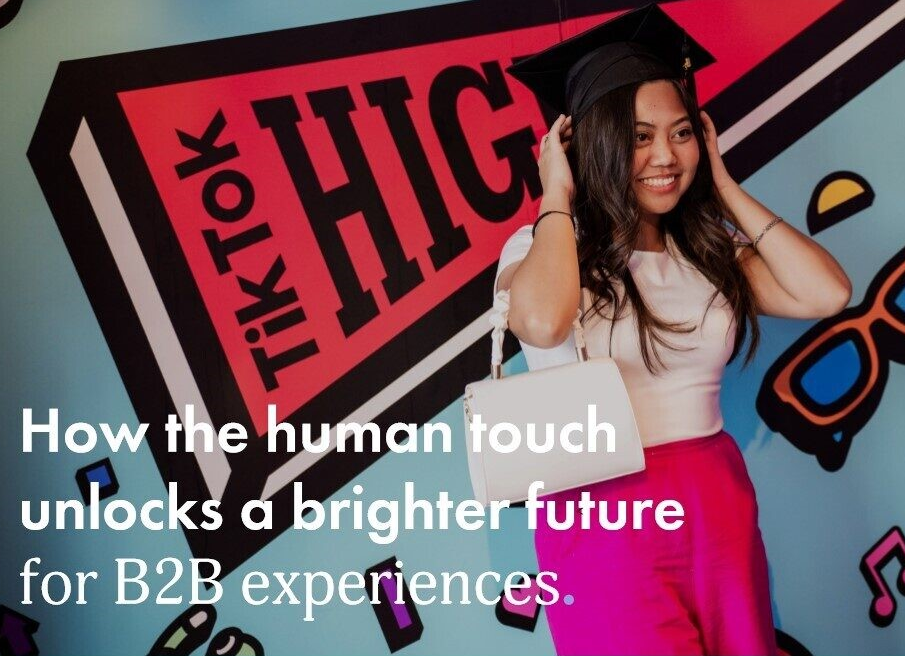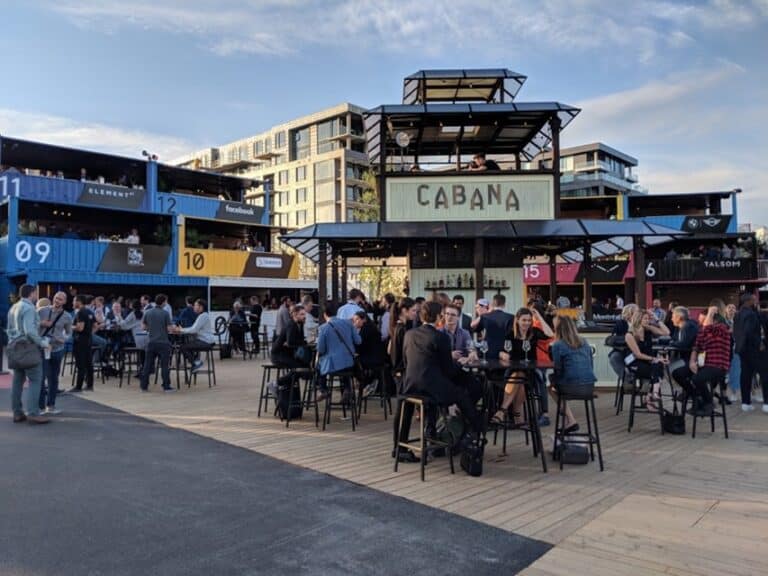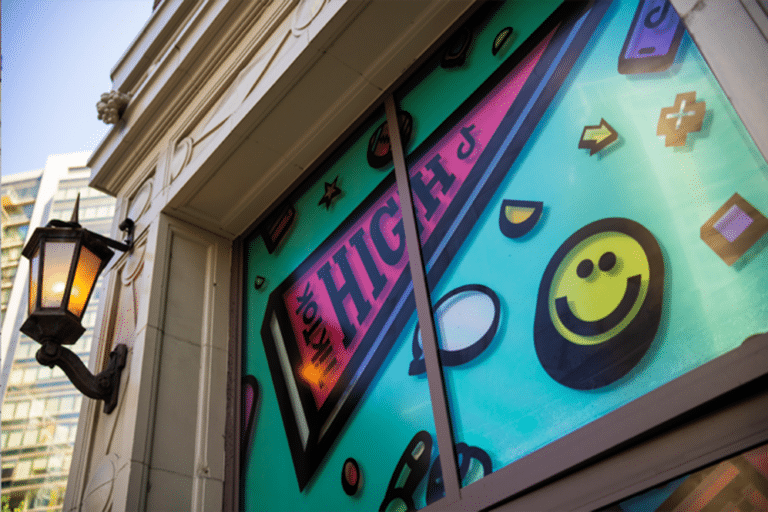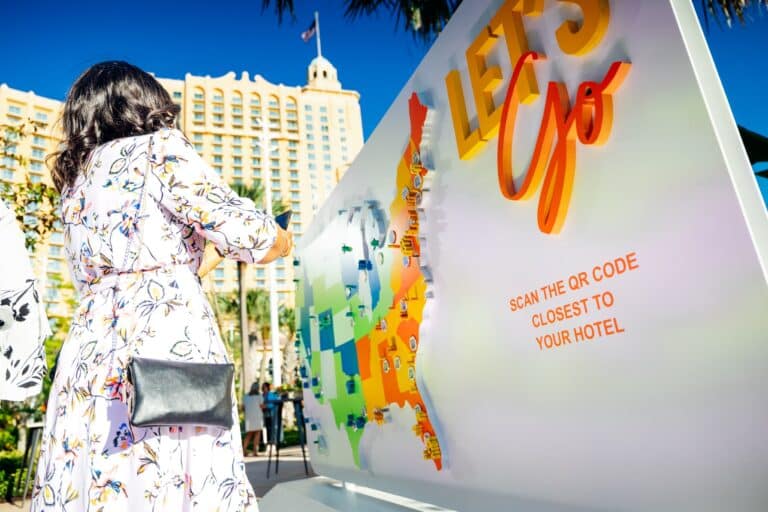Don’t be boring: How to elevate your next B2B event.

Hayley James – Associate Director
When you think of B2B marketing, what springs to mind? Soulless stock images of white men in suits? Graphic designs resembling that of a funeral service? Messaging that is so dry, it has you reaching for the dehydration sachets?
At the time of writing this, there are 938,000 Google search results for the term, ‘B2B marketing is boring’. 42% of B2B buyers saying that they’re bored by the marketing they’re seeing.
It’s hard to sell something or spark any positive action when you’re boring people to death – and when it comes to creating B2B experiences, there really is no excuse for blandness.
Daring to stand out
In a post-Covid world, businesses are daring to be bold with their corporate events. We’re seeing brands encouraging realness at every turn, with an aim to connect with their audience on a deeper level – and pushing for inclusivity in the process. It’s something to get excited about and who knows, maybe B2B’s shiny B2C sibling could even learn a thing or two?
Trends in B2B events and live experiences
So, what are the trends in B2B live experiences that we should pay attention to, and which businesses are doing it well?
1. Design experiences for our “whole selves”
Recent research commissioned by Google concluded that “humans are humans, no matter if they are buying for their business or themselves”, so it’s vital that we cater not just for the person’s business needs, but their human needs too.
Events that break away from corporate formality are seeing huge success and C2 Montreal is a great example of this. The purposefully relaxed environment promotes higher levels of creative thinking and social connection among guests, allowing people to show up authentically and (dare I say it) be their best selves.
C2 Montreal designates 80% of the event space to networking (the not-too-awkward-and-forced kind) and incorporates refreshing design, designated nap and relaxation pods, with alcohol served from 8am – all of which contribute to the energised atmosphere.
2. Make complex information inspiring
The challenge of making complex information into content that is digestible and inspiring is one that many businesses face in the B2B arena.
Last month, Sense worked with TikTok to bring together 300+ independent small businesses for a day of learning in New York and Los Angeles. To make this an experience to remember, guests were transported back to school to TikTok High, where they were immersed in a colourful world where trends and friends came together. TikTok Tutors encouraged guests to get hands-on with cutting edge business tools and tactics in a fun, familiar setting that oozed 90s nostalgia. Proving that a big creative idea always has a place in the mix.
3. Encourage play and discovery
Experiences that let adults act like children are booming, as recently covered in The Economist. This rise of ‘kidulting’ does not have to be set aside for the world of B2C. When the right balance is struck (and no, we’re probably not talking ball pits on this occasion) encouraging playfulness will help increase customer loyalty and engagement.
Studies show that incorporating game-like experiences can result in a 22% increase in brand loyalty, 47% increase in client engagement and an 81% increase in the feeling of community
4. Harness the power of hyper-personalisation
Insights from Mckinsey’s B2B research shows that over 50% of businesses who invested in hyper-personalisation found an increase in their market share. From a consumer (or human) perspective, 71% of us now expect a company to provide personalised interactions.
Earlier this summer, Sense supported Marriott International with their 2023 General Manager summit in North America, with an aim to make guests feel valued and motivated. A huge interactive map was positioned at the heart of the experience, where managers could locate their hotel and scan to receive a bespoke message of thanks from their boss. A simple yet special moment of personalisation that won’t be forgotten.
5. Tap into event locality
Leaning into and celebrating event locality not only shows effort and attention to detail, but links back to the concept of appealing to our “whole selves”: people want to feel like they are making a difference. By incorporating local elements, whether it be including local produce in menus or working with local talent for entertainment, it can help brings a tighter sense of community.
Sense worked with eBay to launch the “Home Grown” program, organising regional events for local sellers to come together and showcase their products in real life, which had benefits at all levels. This increased exposure for eBay sellers, while subsequently resulting in more listings, purchases on, and visits to the eBay platform in future. It also gave people the gratification of shopping local. Not to mention the contribution it provided to the high street.
6. Creating moments of celebration
The concept of Emotional Contagion states that when we see something uplifting, it genuinely boosts our mood. When we share these moments of fun with others, our enjoyment is boosted even more than if we were alone. So, it is important to curate and harness these moments at corporate events to encourage positive emotion and aid attendee cohesion – without it feeling forced.
SXSW has led the charge with this concept of “Festivalisation”, integrating music, technology and film as a way to reframe the potentially stuffy connotations of a conference or expo. SXSW truly mixes business and pleasure, putting a perfect twist on a business event, and something we can all learn from.
7. Sustainability is necessity
With a more climate conscious population, it is essential that companies and brands make an active effort to be more sustainable. It’s not just good for the environment, but also for business. Under certain circumstances, perceiving something as ‘sustainable’ can also lead to consumers assuming other positive traits, so acting as a Halo Effect.
Therefore, considering digital registration, meatless lunches, no single-use plastics and a way to track/reduce your carbon footprint are all vital in the mix – to name a few.
It’s clear to see that B2B experiences don’t have to be – and in fact never should be – boring. To uncover the kind of insights that can drive real B2B effectiveness, we need to look beyond the unfortunate stereotypes and make a bold commitment to unforgettable creative and innovative storytelling. In order to forge emotional connections that prevail, we as marketers need to tear up the B2B rulebook, avoiding blending in and be ready to hear the feedback, “that’s the best event I’ve ever attended”.


